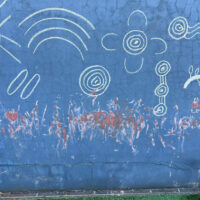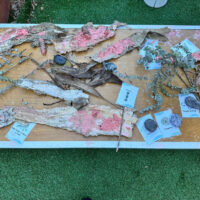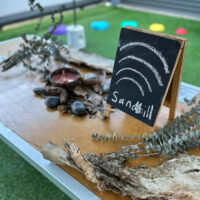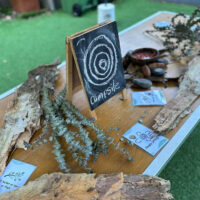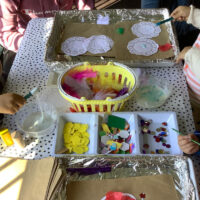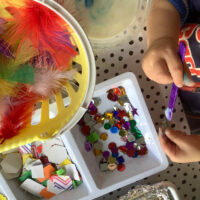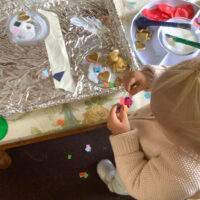Family Day Care Sydney Wide
Aunty Fleur and Uncle D, who are both Māori people, run a dual Family Day Care service in Randwick. During Reconciliation Week (27 May to 3 June), the educational program for children included a focus on Aboriginal and Torres Strait Islander perspectives, through art, symbols and natural materials borrowed from Country. The story below is and excerpt from their program’s communication diary.
Story by Educators Aunty Fleur and Uncle D
National Reconciliation Week – Now More Than Ever 2024
Tena koutou, hello to all, and welcome everyone.
Acknowledgement of Country
Aunty Fleur’s Family Day Care, with deep respect, acknowledges the Traditional Owners of Country throughout Australia and their enduring connection to lands, waters, and communities. We also pay our respect to the rich Aboriginal and Torres Strait Islander cultures and to Elders past and present.
National Reconciliation Week
The National Reconciliation Week theme for 2024 is ‘Now More Than Ever’. We need connection. We need respect. We need action. And we need change. Now more than ever, we need reconciliation. In early childhood, this is a time we use and dedicate to building positive, and respectful relationships between Australians while celebrating Aboriginal and Torres Strait Islander Peoples’ culture.
Today, we celebrated our First Nations cultures by participating in activities promoting awareness of culture. The children get to experience, share and enjoy these activities, building a connection and respect for the culture and the land we live on and share.
Mat Time
The children sat in our meeting place in a circle around a campfire; a meeting place in First Nations culture is where everyone comes together, just like we do at mat time. We shared our acknowledgement of country before sharing the story ‘Back on Country’, by Adam Goodes and Ellie Laing. The book shows children sitting around a campfire in a circle. When we sing and light fire, this lets our ancestors of the land know that we are there.
Activity
In the book, the children gather resources like dirt, clay, and rocks from the land and mixed them with water to create a paste called ‘Urbmari Vapi’. The children in the story used this to paint their faces and draw on the large stone walls in the caves. Today, our children created their own Urbmari Vapi, using natural resources from our land—clay mixed with water.
Bark, Rocks, Eucalyptus, Sticks, Pinecones, Leaves
The children used these natural resources to create and explore, drawing on the bark with their fingers, making patterns, using the pinecones like a brush, dipping them in the mixture and painting with them. Eucalyptus leaves were placed on top and doubled up as another tool to smear the clay. The children spent at least an hour at the table, exploring the natural materials from our land. We moved to the wall with large symbols drawn on it, just like the cave in the story; the children got creative, using their fingers to draw on the wall, as well as stones and sticks to smear the clay, branches to brush the clay and pinecones to push the clay-like dots onto the wall. I also saw some children using clay on their hands to press their handprints onto the wall.
A part of our daily practice has always been embedding cultural learning, which grows our children’s knowledge, supporting children’s sense of identity and belonging. It also promotes a culture of understanding and respect towards cultural diversity for all children.
The children also got to try some new food. I made a slow-cooked kangaroo stew with veggies, cooked for ten hours. It was very tender, falling apart, and the children loved it.
Happy Reconciliation Week everyone!
Community Playgroups
Story by Playgroup Coordinator Rebecca
Encouraging children to create and experiment is incredibly important as this helps them to develop an understanding of the world around them. In an experience at playgroup last week, the children had the opportunity to create and experiment through creating collages.
Exploring how to get glue onto collage materials, and then getting these to stick to the collage backing is an invaluable learning experience for a child. Through this experience, they explore cause and effect, problem solve and develop and test their ideas. This kind of activity also engages children’s fine motor skills and helps them to develop independence as they make choices about their work.
Creativity opens the door to more children having the opportunity to use their unique learning styles to learn. Creative expression provides opportunities for young children to try out new ideas, develop their imaginations and problem-solving skills and see what happens as a result of their experiments.
When we think about creativity, we often think about creative arts such as dance, sculpture, painting and drawing, but it is also possible to be creative in scientific ways. Creative-scientific explorations can involve problem-solving, testing an idea to see if it works or is true, investigating, discovering and inventing.
At playgroup we try to encourage creativity in all activities we provide for your children. Creativity is not limited to art and craft activities; it also applies to any play experiences in which a child makes choices about how they will use a toy. Open-ended toys, materials and activities, coupled with a child’s imagination, allows them to be in charge of the fun!
